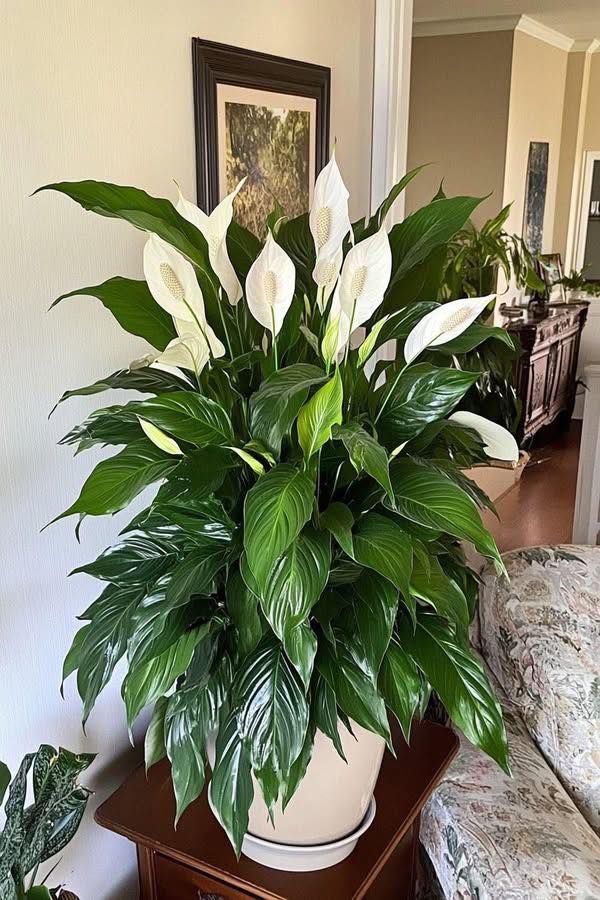3. Provide Filtered Light
Modify the Light Conditions
reddit
Now, when you move your plant indoors, especially in colder weather, the amount of light it receives may decrease. Peace lily is an understory plant that gets filtered light from the tree canopy. It can tolerate all shade conditions but prefers diffused daylight of at least 2-4 hours daily.
An east-facing window is an ideal place with a mix of shade and light. And don’t forget to rotate the plant regularly so all parts receive equal sunshine. You can also use grow lights for this.
4. Keep it Humid
Keep Surroundings Humid Enough
These tropical stunners love and need 50-60% humidity for lush leaves and blooms. When humidity drops during fall and winter, simply mist the plant or use a humidifier to raise humidity levels.
You can also place the pot in a tray filled with water and pebbles. Read more ways to increase humidity for houseplants.
5. Club with Companions
Trailing from the point above about humidity, placing peace lily alongside compatible companions like spider plant, boston fern, snake plant, pothos, and crotons—plants with similar needs.
These create a cozy environment with ample humidity, and some plants, like ferns, also deter certain pests that can afflict your peace lily.
6. Check for Pests
Check the Plant for Pests
Certain pests like mealybugs, aphids, and spider mites can affect your peace lily even during fall and winter. Look for signs, such as small clusters on the leaves or sticky residue. Many pests lay eggs that go unnoticed; they hide on the undersides of leaves or in the soil.
As the weather cools down, some pests and their eggs may go dormant, only to become active again in spring when temperatures rise. To prevent infestations, make sure your plant gets good air circulation and ample indirect light.
7. Wipe down Leaves
Your peace lily may be heading towards dormancy, but that’s all the more reason to keep it clean! Dust, fungus, pests, all enjoy the negligence that arrives with winter, when all your attention goes to other plants with winter blooms.
It is common for leaves to start browning at the tip with poor drainage, or have white webs and sticky residue due to pests. Gently wiping down the leaves with rubbing alcohol, insecticidal soap, or just tepid water even, will prevent the problem from getting out of hand.
see next page
ADVERTISEMENT

